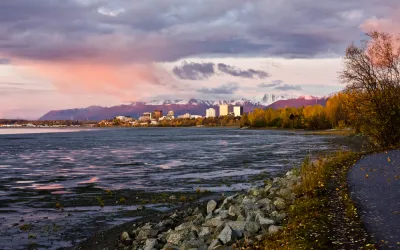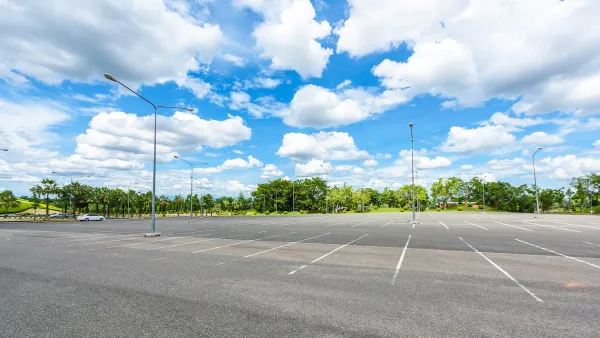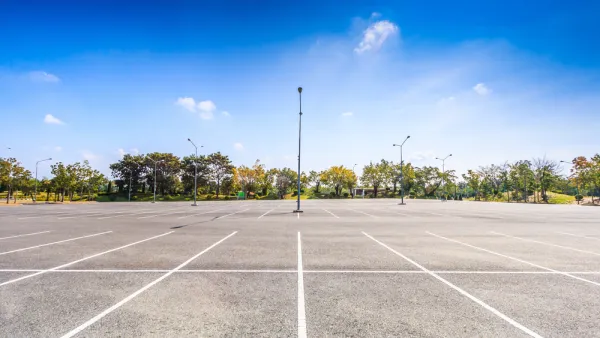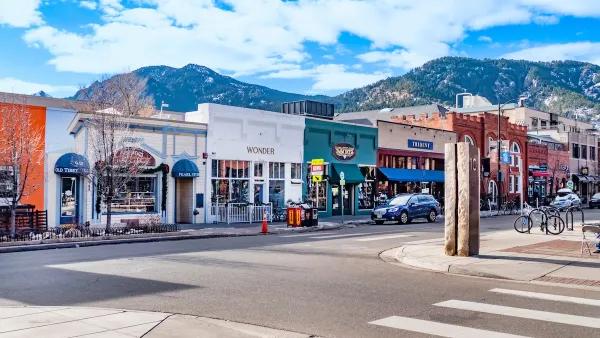With an average of eight parking spots per one car, U.S. cities have a glut of parking. How can valuable urban space be used more effectively?

In an opinion piece for the Anchorage Daily News, Kevin Cross, Amanda Moser, Eric Visser, Daniel Volland and Emily Weiser argue that, like many other U.S. cities, Anchorage has a parking problem. That is, there is too much of it.
According to the authors, “Excessive parking obstructs housing development, impedes adaptive reuse of buildings and hinders the creation of vibrant spaces that allow our community to flourish and feel connected.” They attribute this in part to the parking minimums included in the city’s municipal code, which call for unnecessarily high numbers of parking spots for many uses.
Parking overbuilt to a level far exceeding normal usage creates vast swaths of empty space. Less land is available for development that adds value to our city. It is, therefore, worth exploring whether we should require minimums at all.
The article argues that eliminating parking minimums won’t affect existing parking, will still allow developers to include as much parking as is appropriate for their projects, and will have only small, incremental effects on on-street parking. Pointing to an example from Portland, Oregon, the authors write that “Parking minimums raise the cost of housing when Anchorage has a critical need for affordable and middle market-rate housing. They make multi-family housing developments more expensive and often impossible to build.”
To cement their case against minimum parking requirements, the authors note that the requirements put a disproportionate burden on small entrepreneurs who want to rehabilitate old buildings, decrease walkability, and slow housing construction. “In the absence of parking minimums, we’ll still have parking— but we’ll be free to decide how much it’s worth to us and weigh its value against the other things we could do with the same finite, precious land.”
FULL STORY: Anchorage has a parking problem — but maybe not the one you think

Analysis: Cybertruck Fatality Rate Far Exceeds That of Ford Pinto
The Tesla Cybertruck was recalled seven times last year.

National Parks Layoffs Will Cause Communities to Lose Billions
Thousands of essential park workers were laid off this week, just before the busy spring break season.

Retro-silient?: America’s First “Eco-burb,” The Woodlands Turns 50
A master-planned community north of Houston offers lessons on green infrastructure and resilient design, but falls short of its founder’s lofty affordability and walkability goals.

Test News Post 1
This is a summary

Analysis: Cybertruck Fatality Rate Far Exceeds That of Ford Pinto
The Tesla Cybertruck was recalled seven times last year.

Test News Headline 46
Test for the image on the front page.
Urban Design for Planners 1: Software Tools
This six-course series explores essential urban design concepts using open source software and equips planners with the tools they need to participate fully in the urban design process.
Planning for Universal Design
Learn the tools for implementing Universal Design in planning regulations.
EMC Planning Group, Inc.
Planetizen
Planetizen
Mpact (formerly Rail~Volution)
Great Falls Development Authority, Inc.
HUDs Office of Policy Development and Research
NYU Wagner Graduate School of Public Service




























